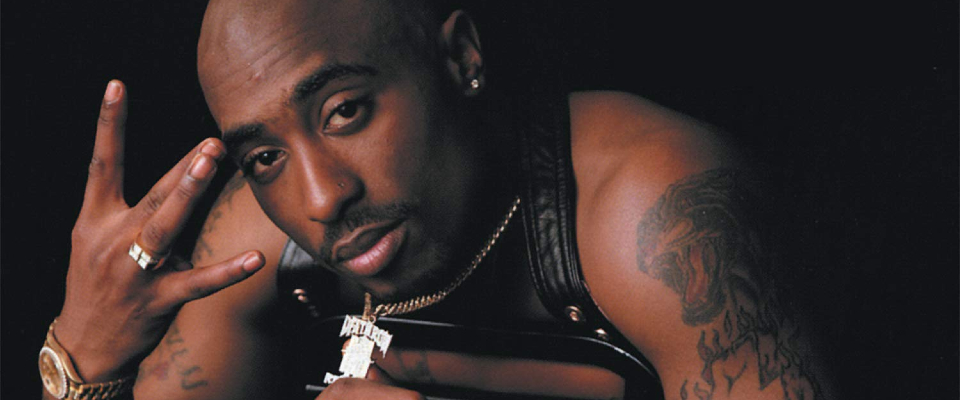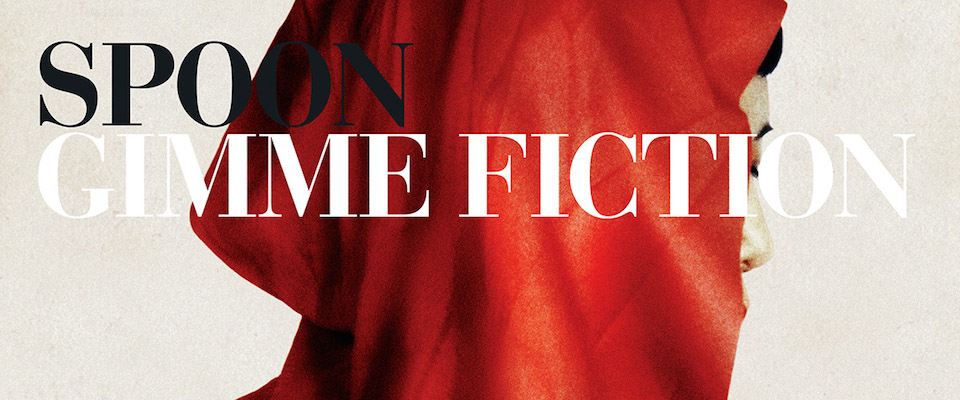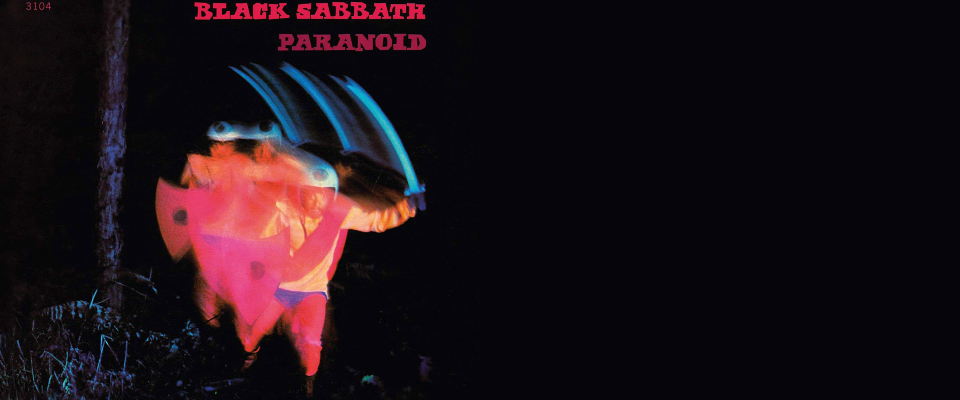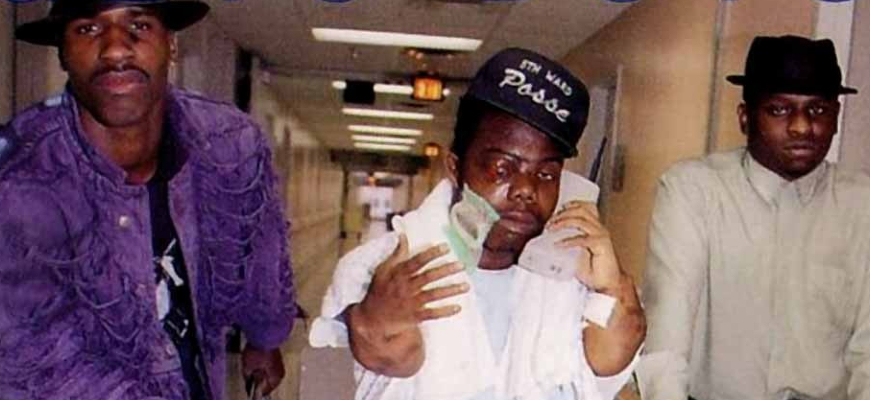It’s been twenty-five years since Death Row and Interscope Records issued All Eyez on Me, the fourth album from California-based rapper 2Pac. At a whopping twenty-seven tracks, All Eyez became the first-ever double LP for a solo hip-hop artist, and its release, exactly seven months before 2Pac’s death, made it the final record of his lifetime. Listening again in 2021, All Eyez on Me still hits hard with its expansive G-Funk sound, ensemble cast of collaborators, and some of the finest rhymes 2Pac’s career had to offer.
2Pac Against the World
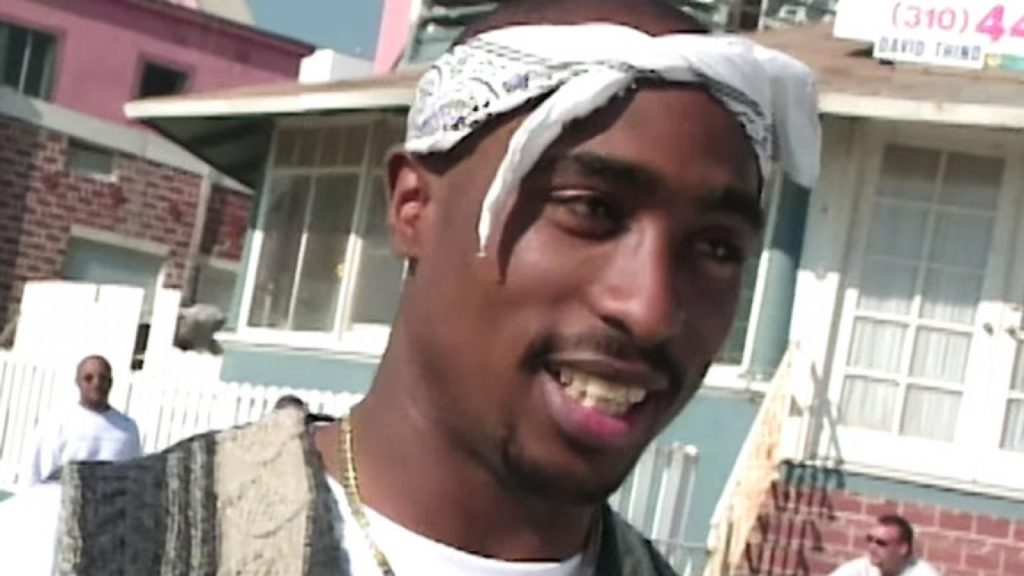
If there ever was a Renaissance man of the 1990s, it was Tupac Shakur. Born in East Harlem to a family of several prominent Black Panthers and re-christened Túpac Amaru at age one (after the executed Peruvian rebel of the same name), Shakur’s characteristic defiance developed alongside his insatiable creativity. When he was thirteen, Shakur and his family moved to Maryland, where he flourished at the Baltimore School for the Arts, through poetry, acting, jazz, and yes, even ballet. Shakur’s humor and steady reputation as the school’s best rapper earned him friends of all kinds, including future Hollywood actress Jada Pinkett, though their budding relationship was cut short in 1988 when Shakur moved to Marin City, California, just north of San Francisco.
Uprooted again and adapting to a new life on the West Coast under the handle MC New York, Shakur began brushing up his poetry skills at The Microphone Sessions, a writing workshop in nearby Oakland led by Shakur’s soon-to-be manager Leila Steinberg. Steinberg recognized Shakur’s talent right off the bat, and after securing a concert for Shakur’s group Strictly Dope, she got Shakur’s name across to Digital Underground manager Atron Gregory. Impressed by Tupac’s outgoing energy, physical prowess, and natural showmanship, Gregory recruited Shakur into Digital Underground as a backup dancer and stagehand in 1990. Shakur soon advanced into a more integral role and in January 1991, 2Pac made his premiere appearance on “Same Song”, the album opener for Digital Underground’s This Is an EP Release.
Fast forward to the mid-’90s. Tupac Shakur had become a household name thanks to his back-to-back breakout roles in Juice and in Poetic Justice, opposite Janet Jackson. He’d accrued considerable praise and controversy from his first two solo albums and had rounded out the lineup of his group Thug Life, who released their sole eponymous album just weeks before 2Pac was non-fatally shot in an armed robbery late ’94. 2Pac recovered remarkably quickly but his unwillingness to overlook suspicious circumstances surrounding the robbery soon led him to end relations (personal and professional) with Notorious B.I.G. and Puff Daddy (both of New York’s Bad Boy Entertainment) as well as Thug Life member Stretch.
Recorded from ’93 to ’94 and distributed by Interscope in March of 1995, Me Against the World became the most acclaimed album of Tupac’s lifetime. And though Shakur’s allegiances to New York were already dwindling by then, his incarceration at Clinton Correctional Facility beginning in February of ’95 was simply a tie he couldn’t sever. Fortunately for ‘Pac, the prospect of signing an East Coast ex-pat was far too good to pass up for Death Row Records co-founder Suge Knight.
All Eyez on Me
“It’s called All Eyez On Me. That’s how I feel it is. I got the police watching me, the Feds. I got the females that want to charge me with false charges and sue me and all that. I got the females that like me. I got the jealous homeboys and I got the homies that roll with me. Everybody’s looking to see what I’mma do now so All Eyez On Me.” (December 1995 interview with MTV’s Bill Bellamy)
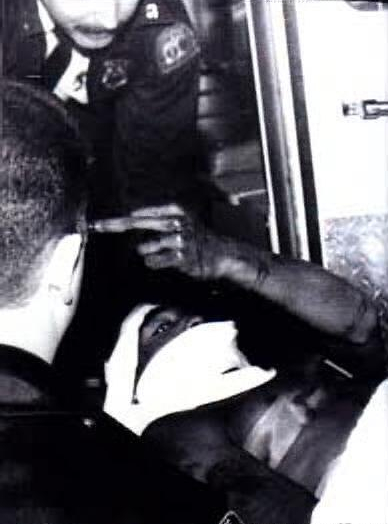

Between his substantial arrest record, vexing public persona, and eagerness to “play” for the West Coast, 2Pac made for an ideal Death Row “inmate”. Knight acknowledged the potential to cash in on Biggie and ‘Pac’s beef within the burgeoning East Coast-West Coast rivalry, and, after negotiating with Interscope’s Jimmy Iovine, paid Shakur’s $1.4 million bond on the condition that he release three albums with Death Row Records. Shakur, elated by the early liberation in October of ’95, and aching to rekindle his creative spirit, got straight to work.
With Death Row Records as their platform, former N.W.A. mastermind Dr. Dre and his disciples revolutionized rap; Dre with The Chronic in 1992, Snoop Doggy Dogg on ’93’s Doggystyle, and The Dogg Pound two years later with Dogg Food. All three debuts showcased explicit, gang-minded lyrics on top of slick, sample-heavy beats, with production overseen by Dre himself. Dre recycled sounds made popular by Parliament-Funkadelic (“P-Funk”) and others in the late-’70s/early-’80s, (particularly high-pitched synth melodies and deep, crunchy basslines), over instrumental soul riffs and processed drum breaks. The style referred to as “Gangster Funk” or “G-Funk” defined Death Row’s heyday.
2Pac’s voice was practically made for G-Funk. “California Love” and “How Do U Want It” dropped as a double A-side just two months after Shakur’s bail was posted, inaugurating ‘Pac into Death Row with two of his most successful singles. Pent up for months and under constant threat of re-entering prison, Shakur was determined to record as much as possible as quickly as possible. As a result, “One-Take Tupac” ended up recording dozens of songs before the sessions wrapped in December. He ditched the working title Euthanasia along with his plan to release the album on Christmas, due to his seemingly unstoppable recording drive and work on promotional music videos. And on February 13th, 1996, nearing the height of his superstardom, 2Pac released All Eyez on Me.
Track by Track
“Ambitionz Az A Ridah” is one hell of a fast-acting mood maker. It’s incredible how full five seconds can feel despite such a simple arrangement of vocals, piano, and MIDI strings – all before the kick comes in. “Ambitionz” is the first of several tracks produced by gangsta rap trailblazer Daz Dillinger, whose sparse use of percussion and atmospheric legatos allow 2Pac to charge right out of the gate. Recorded within hours of his prison release, 2Pac gives a stellar performance even by his own comparison, dominating with rapped verses and sung choruses. A great jumping off point for newcomers, the instant recognizability of “Ambitionz” preserves a legacy as an iconic album opener and textbook-worthy example of gangsta rap.
G-Funk producer Johnny “J” allegedly recorded more than a hundred songs with 2Pac during the All Eyez sessions, and “All About U” is one of the best that made the cut. ‘Pac delivers the first two verses then eschews his time to two members of Shakur’s fledgling project The Outlawz, Hussein Fatal and Yaki Kadafi. Hooks from Death Row’s vocal virtuoso Nate Dogg provide some good pacing to the song, and the still-blooming Snoop Dogg does his pseudo-pimp shtick to wrap it up. Also, gotta mention ‘Pac’s all-purple bedroom in the music video.
Carrying the momentum of “All About U”, Nate Dogg adds some major points to the accessibility of “Skandalouz” with gliding hooks and flourishes. Blunted out or ready to party, Daz Dillinger’s beat (heavily derived from “Candy” by Cameo) brings the out best of both worlds on this melancholy, talkbox-fueled G-Funk banger.
Speaking of Daz, he makes his sole appearance as both rapper and producer on “Got My Mind Made Up”, an interpolation of the Instant Funk song of the same name. As a die-hard Wu-Tang fan, this may just be my personal favorite from All Eyez on Me. Method Man‘s laid-back flow, Redman‘s exaggerated style, and ‘Pac’s bombastic bars play well off each other, and when you toss Death Row veterans Kurupt and Daz in the mix… you’ve got something spectacular. Fun fact: Meth’s contribution here and on “The What” by Notorious B.I.G. makes Method Man the only artist to be featured by both 2Pac and Biggie in their respective lifetimes.
“How Do U Want It” may be the most radio-friendly 2Pac song out there (no surprise given its 1997 Grammy nomination). Johnny J’s simple flip of “Body Heat” by Quincy Jones anchors the soaring choruses from K-Ci & JoJo, and grooves well under ‘Pac’s dynamic flow.
As much as I hate to say it, I sort of wish I could preview what Biggie would’ve sounded like on “2 Of Amerikaz Most Wanted” instead of Snoop. That said, you get exactly the quality you’d expect from 2Pac and Snoop Dogg (SnooPac?) together over one of Daz’s more menacing beats.
“No More Pain” is so, so, sooo far ahead of its time. R&B producer DeVante Swing knocked it out of the park with this Dirty South/Texas-style beat and the triplets in ‘Pac’s flow fit well. I bet if you tinkered with some of the drum programming to give it a more modern finish, this would kill on current trap playlists…oh wait.
If “Heartz of Men” was produced by anyone other than DJ Quik, you’d have to call it derivative. Its egregious swing, chopped up horn samples, and Richard Pryor inserts make it seem like a novelty at first. But because it’s 2Pac and DJ Quik, the tone steers clear of silliness and takes a more silky, serious route.
“Life Goes On” admittedly has a beautiful message, one that reveals another sympathetic layer to 2Pac’s complicated psyche. That said, as cold as it sounds, it’s not Johnny J’s best instrumental by a long shot.
“Top Billin” from Audio Two contains one of my all-time favorite sample flips, so I have a heavy bias towards “Only God Can Judge Me” since it features the same breakbeat pretty prominently. And I don’t know who played bass on this song, but whoever it does a bang-up job.
Ostensibly a proof-of-concept for The Outlawz (or Outlaw Immortalz), “Tradin War Stories” is definitely better suited for the folks who appreciate lyrical content over the bop factor. True to its name, this four-way lyrical exchange scores major points for narrative quality.
I first heard All Eyez on Me around the same time I was discovering Zapp, so naturally my high school self fell in love with the “California Love” (remix). I had somehow never heard the original ’til then, and never being a huge Joe Cocker fan, I still prefer the remix version to the pre-album single. Dr. Dre gives a sneak peak into the futuristic, orchestral sound he would spearhead with 2001 and Zapp’s Roger Troutman gives one of the most memorable studio performances of his life.
Recorded immediately after “Ambitionz” on the day of his release, “I Ain’t Mad At Cha” is like a time capsule of 2Pac’s passion. As the final single released ahead of All Eyez on Me (and Daz’s final track on the record), this one is truly lightning caught in a bottle. If you haven’t seen the music video, drop what you’re doing and treat yourself.
There’s…not much to be said about “Whatz Ya Phone #”. But given that it’s co-produced by Johnny J and 2Pac himself, I suppose it’s exactly what 2Pac wanted. Just silly, sexy ’80s nonsense. And it certainly closes “Book 1” of All Eyez on Me‘s on an intriguing note.
All Eyez’s “C-Side” kicks off with “Can’t C Me”, where Dr. Dre revives the beat from Snoop Dogg’s “Who Am I? (What’s My Name?)” and interpolates George Clinton‘s “Atomic Dog” yet again. Except this time, they actually get George Clinton to appear on the recording! Just goes to show that G-Funk dreams really do come true.
The samples in “Shorty Wanna Be A Thug” may use some pretty scratchy chops (Hank Crawford’s “Wildflower” by the way), but Johnny J manages to smooth out the edges for some synth-heavy G-Funk on “Book 2″‘s sophomore song.
Having already appeared with Clinton on “Can’t C Me”, Death Row’s resident vocalista-for-hire Nanci Fletcher brings back her falsetto heat on “Holla At Me”. It’s the only “Bobcat” Ervin beat on All Eyez and to me, it honestly sounds a little muddy. But I just can’t say no to the sax squeaks and vibraslap!
Without commenting too much on the Biggie-‘Pac beef, “Wonda Why They Call U B____” had originally featured Big’s wife, Bad Boy Records singer Faith Evans. Her vocal takes eventually got scrapped (check out the demo version below), but speculation about Faith and ‘Pac’s indeterminate relationship would remain a key component to the rappers’ quarrel. Nevertheless this Johnny J/2Pac co-production totes all the bells and whistles of a G-Funk classic.
The final performance from both Nanci Fletcher and The Outlaw Immortalz on All Eyez, “When We Ride” peddles a more hardcore sound than its predecessors. That shouldn’t come as a shock considering the beat is crafted by Ice Cube producer DJ Pooh. Abstract but soulful, the low-end bounce could only be figured out by an innovator like Pooh.
For the uninitiated, a big chunk of 2Pac’s career was spent re-conceptualizing the idea of a “thug” from a derisive term into the notion of an underdog, one who keeps their chest puffed out and head held high despite having nothing. That sentiment echoes across the group track “Thug Passion”, featuring Jewell, Dramacydal, and Storm over a Zapp-centric Johnny J beat.
Johnny J goes on a streak of sorts at this point in the album, guiding us through “Picture Me Rollin'” and “Check Out Time”, before “All Eyez on Me” and “Run Tha Streetz”. There’s a distinct sound across these four tracks, characterized by gentle sine wave synths, thumping kicks, and R&B-inspired bass runs.
Richie Rich feature “Ratha Be Ya N____” appears between “Check Out Time” and the title track, flaunting a contemporary take on Bootsy Collins’ “I’d Rather Be with You” that’s…actually a pretty good cover!
Then, having adequately cooled down from his production on “Tradin War Stories”, Rick Rock chills out for another extended posse cut, the penultimate “Ain’t Hard 2 Find”.
“Heaven Ain’t Hard 2 Find” draws All Eyez on Me to a close, and thanks to work from yet another Ice Cube collaborator, QDIII, and a looong fadeout, it’s the perfect comedown at the end of the experience.
All Eyez in Hindsight
All Eyez on Me sold over half a million copies in its first week, and charted number one on Billboard. “How Do U Want It” and “California Love” both became number-one singles on Billboard. In July of 2014, after five million sales and a wave of awards (in-person and post-humous), All Eyez on Me reached RIAA “Diamond” status. By releasing the very first hip-hop double-LP, 2Pac had set a new standard for the genre and helped legitimize the gangsta rap movement in the eyes of many. The album’s international popularity was met with just as much outrage, pushing ‘Pac to a level of stardom he couldn’t have imagined less than a year earlier. However, the tragedy of All Eyez’s warm reception is that it partially stemmed from the coverage of Biggie and 2Pac’s feud at its most profitable and destructive pinnacle.
Tupac Shakur was shot in Las Vegas on September 7th, 1996, and passed away on September 13th, precisely seven months after All Eyez on Me hit stores. Notorious B.I.G. would be slain in Los Angeles on March 9th, 1997, two weeks before the release of his own double-LP, (the eerily prescient) Life After Death. After the brutal loss of figureheads on both sides, the East/West Coast rivalry quickly petered out.
With its gargantuan one hundred and thirty-six minute runtime, All Eyez on Me is unquestionably one best representations of G-Funk in its prime. ‘Pac’s adoption of the gangster persona permeates unapologetically throughout the who’s-who of producers and vocalists. And on an objective plane, 2Pac’s ability to polish twenty-seven songs in a matter of weeks is nothing short of astounding.
Shakur’s tireless work ethic, urban persona (down to the spelling of his song titles), blunt honesty (no matter how many enemies he made through lyrics or interviews), and groundbreaking visual style (yes, even down to his suspender fashion) provided a benchmark for a whole new generation of artists. 2Pac’s refrain of “Thug life” has since been immortalized and his portrait on the album cover has become emblematic in hip-hop. The record’s sound is decidedly ’90s, and some of the language hasn’t aged well, but the songwriting and production quality captured at the height of Shakur’s fame makes All Eyez on Me an incredible historical document and a collection still worth tossing into your rotation all these years later.
–Jack Anderson
